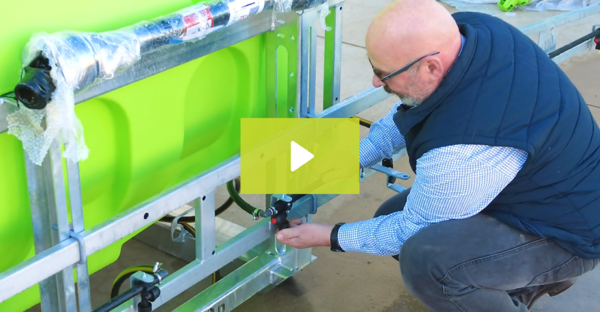A Step-by-Step Guide: How to Calibrate Your Sprayer
An accurate calibration is essential for any spraying function as it ensures that the chemical is applied at the rate intended on the product label. Application in excess of the recommended rate is prohibited, as it can damage plants/foliage and it is uneconomical.
But what does it actually mean to calibrate your sprayer?
This is a calculation to ensure you are applying the correct amount of liquid (chemical + water) to a certain size or area. So here’s a few basic steps to help you calibrate your sprayer:
Example Calculation
Step 1: Check the Calibration on Your Sprayer
Check Nozzle Output
Fill the spray tank with clean water. Run the sprayer at the correct pressure with all nozzles operating.
Place a measuring jug under first nozzle for one minute. Measure how much water is in the jug.
Repeat for all nozzles. Nozzle output should not vary by more than 10%. If it does, the nozzle could be worn or damaged and should be replaced. All nozzles on the boom should have a similar output.
Add all the jug measurements to find the total sprayer output in litres per minute.
Average Output = 41.9 L/min
Calibrate the Sprayer
Speed (km/h) = 360 divided by Time (seconds) and measure Time per 100 Metres
Example:
Speed = (360 ÷ 41.9) = 8.6 Km/h
Output = (1.40 x 600 ÷ 0.5 ÷ 8.6) = 195.35L/min
Step 2: Get the Initial Data
Read the Label
This will give you the Spray Volume, Product Dose & Spray Quality
Example:
Spray Volume = 200 Litres / Hectare
Product Dosage = 50 Litres / Hectare
Spray Quality = Medium
Measure Time
Measure time (in seconds) per 100 Metres
Example:
Time = 41.9 Seconds
Time = 41.9 Seconds
Calculate Speed
Calculate Speed – SPEED (km/h) = 360 divided by TIME (seconds)
Example:
Speed = (360 ÷ 41.9) = 8.6 km/h
Speed = (360 ÷ 41.9) = 8.6 km/h
Nozzle Spacing
Measure the nozzle SPACING – Usually 0.5 metres (50cm)
Example:
Spacing = 0.5 metres
Measure Quantity per Minute
Measure TIME per 100 Metres – OUTPUT (L/min) = VOLUME (L/hec) x SPEED (km/h) x SPACE (metres) ÷ 600
Example:
Quantity = (200 x 8.6 x 0.5 ÷ 600) = 1.43 L/min






